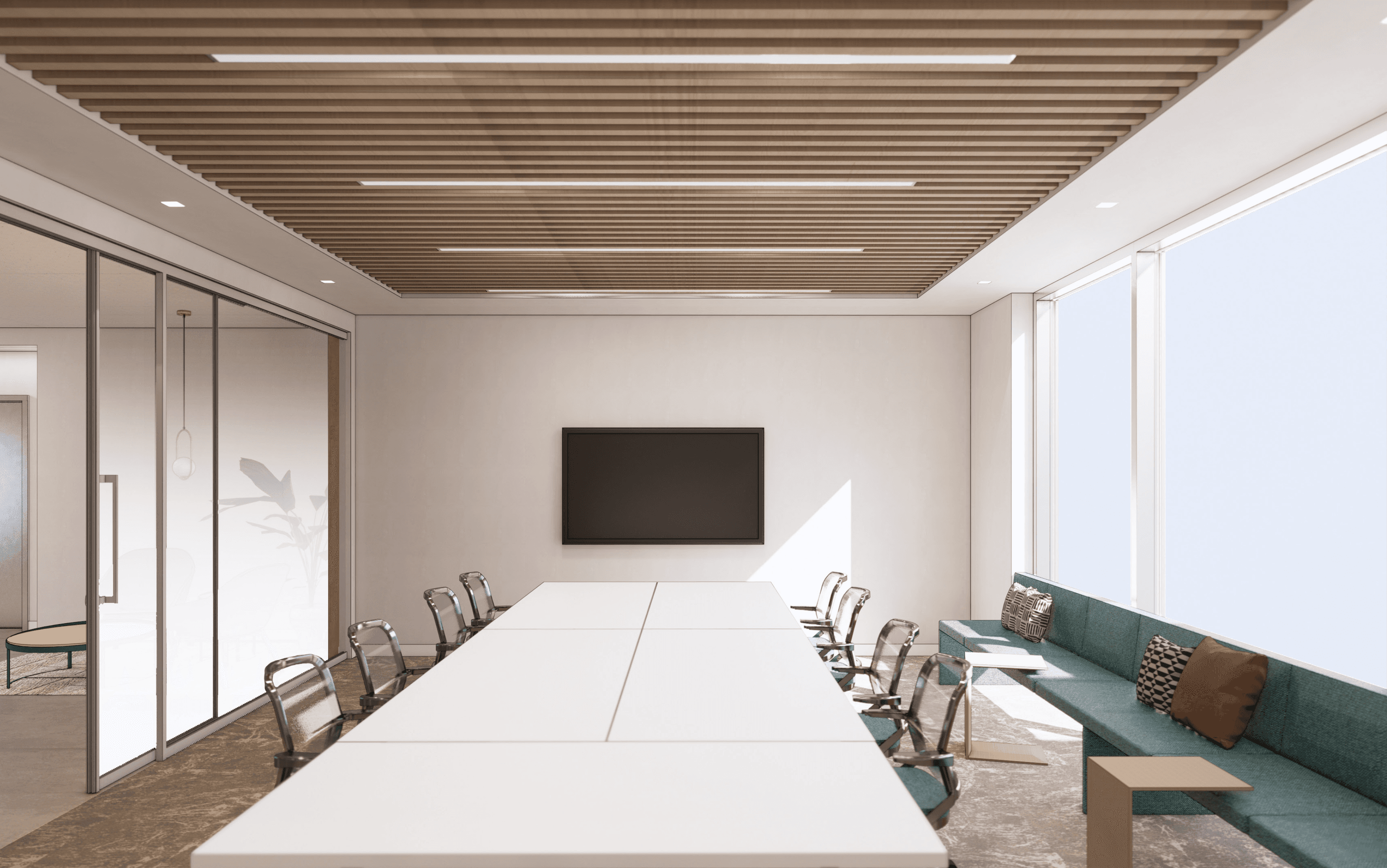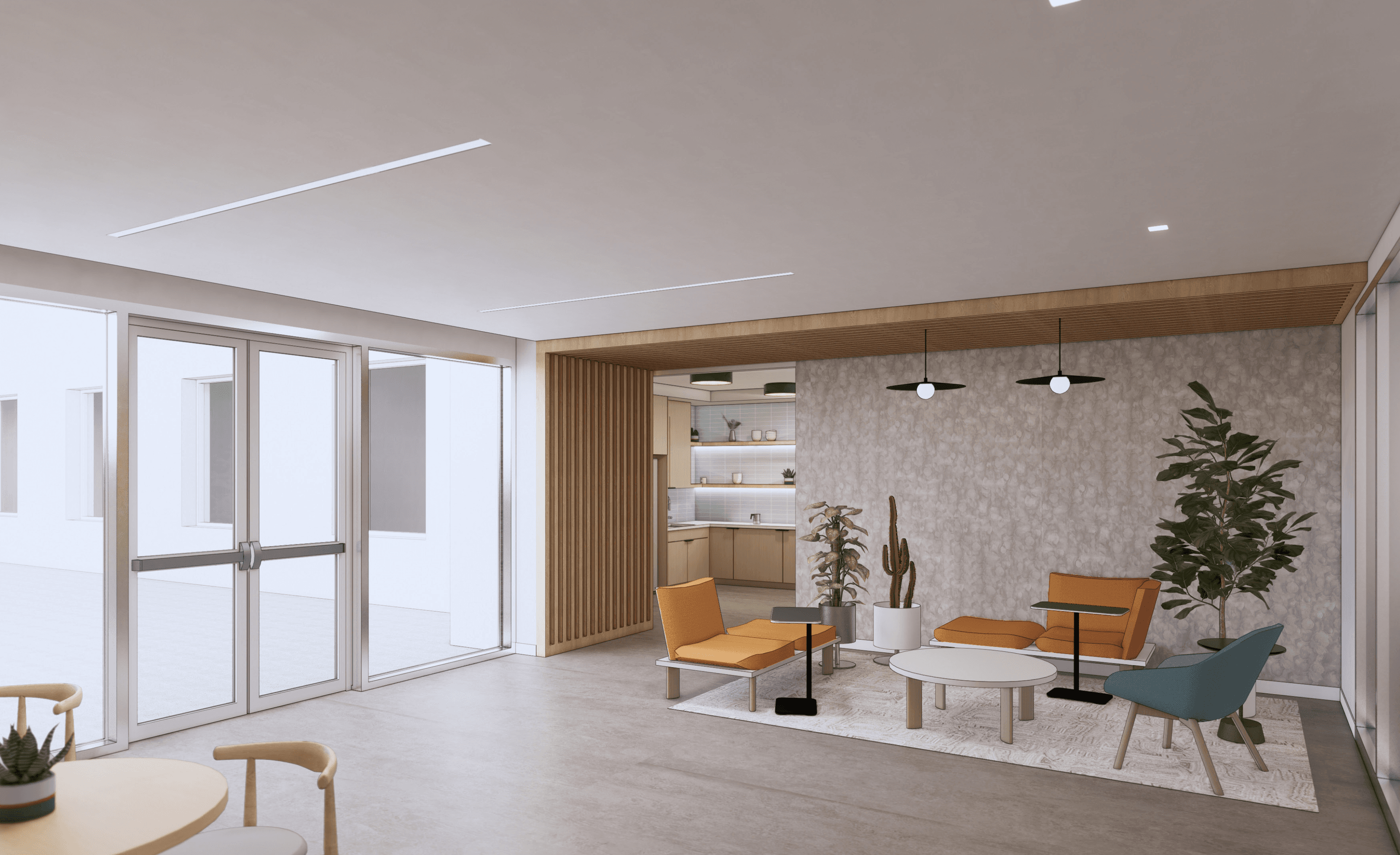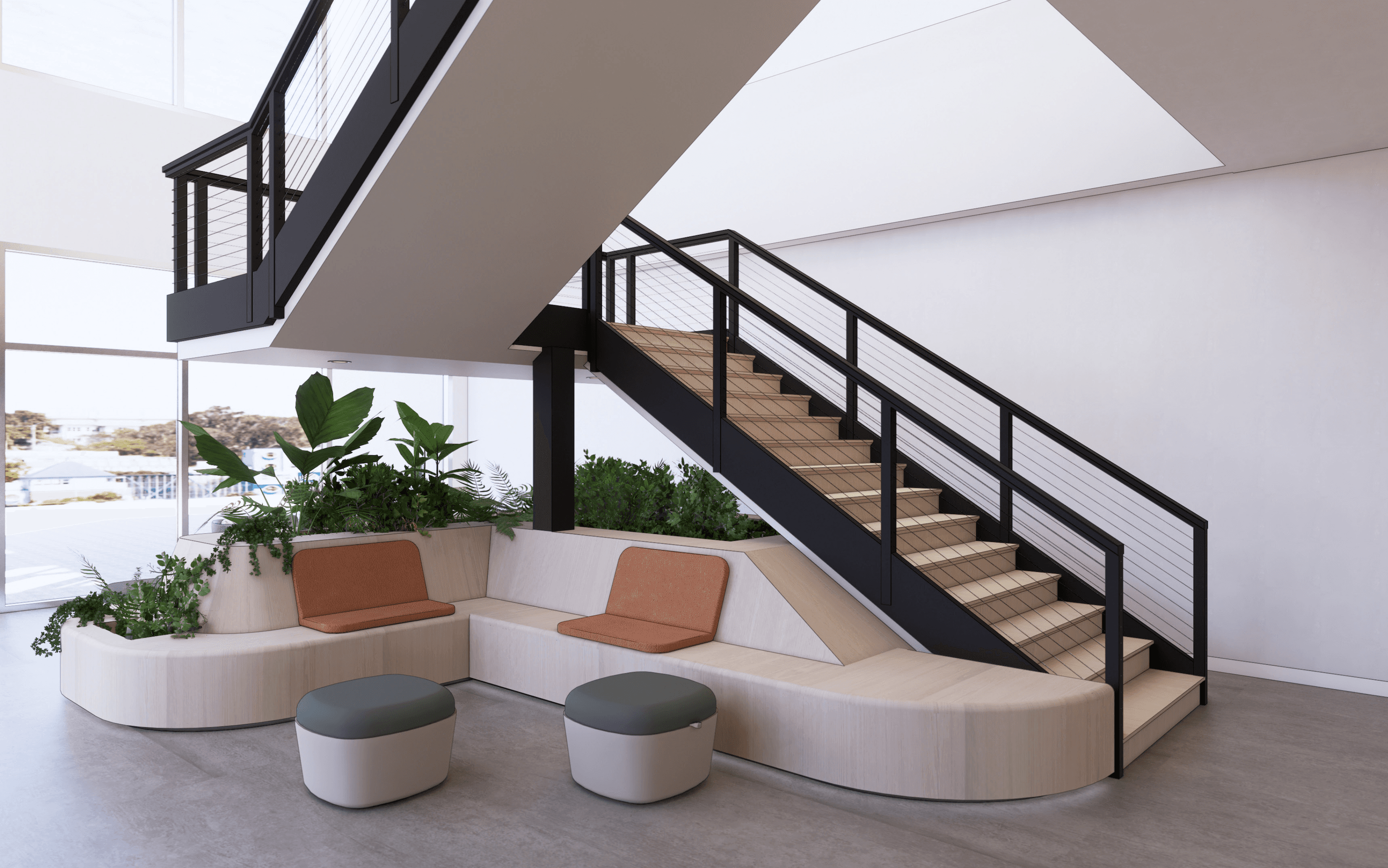You may have heard the term: The Great Resignation.
Anthony Klotz firsted coined this term and predicted the phenomenon in 2019, and it’s happening now. In April, May, and June of this year alone, 11.5 million workers quit their jobs. Surveys suggest that a significant portion of the population is actively looking for or creating new opportunities, and these numbers only increase when it concerns Gen Z workers[1].
What can designers do to help support during these uncertain and transformative times?
Designers have always been on the forefront of creative and progressive change. We may acknowledge that we’re the artists of 3D space, but we are also often unintentional agents of transformation for space and organizations as well.
As Winston Churchill once said, “we shape our buildings thereafter they shape us.” Whether you’re relying on practical knowledge, design research and statistical data, or your intuition, you know this to be true as well.
Therefore, it may be inferred that all facets of life have the power to permeate society’s spaces. That includes our creativity, well-being, personal lives, family matters, social justice and inclusivity concerns, and more.
We must also acknowledge how we get to now approach the office environments that we are designing to be an accurate reflection of societal transformations, and how that approach will shift over time to reflect these burgeoning concerns.
There are clear possibilities and limitations, such as:
- The inability to play a major role in decision or policy making with client companies
- The inability to address more pressing end user concerns, such as promotions, benefits, work from home guidelines, and pay raises
- The ability to provide thought-provoking questions and insights
- The ability to improve the quality of business and personal environments using design expertise
- The ability to research client missions and objectives to verify alignment on social issues and priorities that face many workers today
Consider the audience:
For whom and for what purpose is this space being designed?
Is leadership committed to co-creating excellent environments and experiences for their staff?
Are the spaces being designed with leadership’s vision and approval in mind?
Has the program included detailed and relevant feedback from occupants that is reflective, not only of their work requirements, but the times of which we are living?
Have the needs of a diverse worker community been reviewed and considered?
Is the space and the design reflective of the company’s equity and inclusion goals?
Regarding sustainability, is leadership well-versed in current political and social concerns? What is their stance and flexibility level in serving their employees to mitigate these concerns as they apply to the working environment?

Setting healthy boundaries in the ever-changing workplace - time, distance, space:
Consider that, since the beginning of the pandemic many people have transitioned from working at work, to working at home. Some of those folks have returned full time, part time, or not at all. Unfortunately, many have also lost their jobs.
Since the beginning of this work shift, many employees have struggled to reimagine a critical component of their previous typical workday: boundaries created through natural means, namely time, distance, and space.
These are the boundaries we normally experience when commuting to a workplace environment that is not our own home. Notably, time (the length of one’s commute), distance (the physical space between one’s home and workplace), place (transitioning from a space owned by another, to one owned/rented/occupied by oneself). Another consideration is the shift in energy many have experienced between daily preparations from a highly-visible in-work environment, to an at home environment that has required much less visibility and preparation).
What many gained in the ability to control our own workspaces at home, was lost in the ability to “leave work at work” via distance and time. Many have reported challenges maintaining a healthy work-life balance as work has permeated their home space.
As Nicholas Bloom, a senior fellow at the Stanford Institute for Economic Policy Research (SIEPR), stated, “We are home working alongside our kids, in unsuitable spaces, with no choice and no in-office days,”... “This will create a productivity disaster for firms.”[2]
In shifting from a workplace environment, to home/virtual environment, back to work or a hybrid model, many have experienced adaptation fatigue. To better support workers, the design of workspaces should accommodate this fluidity and change in work scenarios, help to strengthen boundaries, as well as provide support spaces that mentally, physically, and emotionally nourish employees who want to thrive during these changing and challenging times.
A Commitment to Well-being:
Every workspace environment and culture has varying concerns and leadership teams often have varying levels of sensitivity and understanding in these matters and how they impact employee environments, so it’s important to take responsibility for factoring in these questions and concerns as the designer.
In order to establish lasting workplace transformations, designers must be willing to ask uncomfortable questions that reach beyond traditional company objectives. We have to be willing to ask uncomfortable questions that go beyond traditional company objectives. Given what’s known about the current state of the world and how environments have the power to impact people in profound ways, it’s not just our job to ensure a thoughtful and inclusive space outcome for our clients, but our social responsibility.
The global community has been experiencing what some may call a collective trauma. The world has changed profoundly due to COVID and political unrest, and so it’s no wonder that space use requires reconsideration as well. People have faced many kinds of grief, including the loss of loved ones, adjustments from pre-COVID lifestyles, loneliness, isolation, adaptation fatigue, job loss, mental health challenges, disillusionment, life crisis, tricky childcare and school adjustments, schedule conflicts, political and belief-related division, the outcomes of grave violence, and more.
Given the unprecedented grief and trauma experienced worldwide, it’s more important than ever to design wellness into all environments, not just those specifically dedicated to healing.
Provided the nature of the healing environments people seem to want to find themselves in during these times, you may also want to hone in on biophilic and biomimicking spaces for well-being, and focus on evidence-based research along those lines. According to evidence-based research presented by TIME magazine, nature (real or illusory) has the power to lower the stress hormone cortisol, lower blood pressure, boost immunity, support mental health, help manage the challenges associated with neurodiversity, and more.[3]

The friction of return-to-work and remote teams:
Amidst the COVID turmoil, the world has also seen an unprecedented change in how we work. This can feel overwhelming and frustrating, which is of great concern to many companies and workers.
Although designers may not typically be doctors or psychologists, the impacts created by the spaces designed can be profound for well-being, productivity, functionality, and more. Here are a few key steps designers can take during these times to enhance the design process and client relations:
- Survey, survey, survey. Just as a supportive friend listens to support, pay attention for key information. This includes interviewing leadership and requesting feedback from occupants. Gain (perhaps anonymous) space occupant feedback on any issues that may be sensitive, such as space adaptability and flexibility, open plan workspaces, privacy, ability to focus, socializing, job execution, and more key environment happiness factors that may or may not always come up in candid conversations with leadership.
- Notice and pay attention: Consider how to incorporate what’s in the news and online into space transformation. How are world events impacting communities and individuals? Keeping self care in mind (as watching a lot of news can be draining over time), how is it possible to take what’s going on in the world and translate that into nourishing and uplifting work and personal spaces?
- Ask your friends, colleagues, and competitors. Very insightful intel can be gained from our friends and collaborators. Whether it’s a bestie over coffee or a colleague over ZOOM, usually people will reveal on some level what’s impacting their work and personal lives. Some key concepts to pay attention to:
- Do they express if they are happy at work? Are they planning to stay?
- Are social issues affecting them personally or professionally and how so?
- What has personal and family life been like for them and how have they been handling any challenges?
- How is their health and well-being and how have they been coping?
- Conduct evidence-based research. During the initial design stages, research any relevant evidence regarding health and wellness, typical furniture costs per workplace genre, what’s working and not working in the workplace today, environmental psychology resources, and any topics specifically impacting an environment in question.
- Integrate data with design expertise to make environments a place for transformation. This isn’t necessarily about designing a retreat center, although those can be wonderful restorative spaces in and of themselves. Consider how to bring appropriate aspects of the retreat center into everyday life and workspaces to support healthy experiences. This is where those surveys, questions, and synthesizing come in handy. The approach may be as simple as, “Dear [Manager Name], we noticed that 34% of your in-office user base said they wished they had on-site daycare via the survey. This is a popular trend according to [research source] due to [result/statistic]. Had you considered creating a space for daycare at the site? We could accomplish this via [design solution]. Please let us know if you would like to incorporate this into the design program.”
In short, look at the gap between where your occupants are situated regarding satisfaction and where they would like to be as an organization. Then brainstorm ways to support that transformation within the space. Consider what may be highly engaging and supportive towards employees, allowing survey information, research, and colleague conversations to guide the approach.

Considering diversity in workforce and workflow, ie: what’s in it for everyone:
Also note the following: workplaces were originally designed for and by a different workforce than we find nowadays. Namely: white, male, heterosexual, neurotypical, typically-abled, and cis-gendered. In recent years, the workspace has become more welcoming and equitable for people of color, women, the alternatively-abled, and the LBGTQ+ community. The workspace requires continual reimagining to include policies and space designs that support and enhance the experiences of neurodiverse and non-cis-gendered workers as well as continuing diversification enhancements for other interest groups. Strides are still being made in these key arenas. Many folks, especially those from diverse backgrounds, have been taking the time to reflect on whether or not corporate environments are the right fit for their careers going forward.
The level of investment in these transformations may vary. For example, with some companies minor adjustments may be recommended and appropriate for their mission and goals. For others needing more of a systemic change, implementing a few spaces for diversity-supportive change (ie gender neutral restrooms, lactation rooms) may come across as a band-aid, as opposed to the systemic solution that is often needed. In those cases, more involved and comprehensive, company-wide adjustments may be needed to create opportunities for greater impact. This will depend on how in-tune and flexible management is with their user base already, and how often updates are made to policies and spaces to reflect that flexibility.
The world has also been presented with a changing workplace flow and some may never return to a 100% in-office setting. One employee consideration that may be a valuable recommendation to clients is a stipend for work from home furniture and tools (if that doesn’t exist already). This is for both for ergonomic support, as well as legal/worker’s compensation reasons. It behooves companies to at least have work from home recommendations for furniture options for their people to refer to, if not supplied and furnished. An excellent way to bring this up would be to research furniture offerings that are compliant with the company’s existing procurement and furniture guidelines, and make some recommendations on a few products that you’ve worked with before and would recommend as appropriate work-from-home options. If you’re not certified in ergonomics, you may connect directly with a manufacturer rep from a company like Herman Miller, Knoll, Steelcase, Haworth, AllSteel, Teknion and others to find out what those appropriate recommendations would be. They often have in-house ergonomists who are happy to share their scientific and product knowledge to support bringing ergonomic options into the home office. Fortunately, several forward-thinking manufacturers already provide hybrid workplace/work-from-home lines if concerns about integrating the workplace and work-from-home branding exists.
There are so many wonderful products and workplace/work-from-home concepts. The client company ultimately draws the line on where support begins and ends. However, companies better-engage employees this way when they explore these kinds of thoughtful provisions. This is a savvy move from a health and legal standpoint as well. It’s worth asking the question and seeing where the conversation leads.
Putting concepts into play going forward:
Once the full context and direction has been established, consider the kinds of furnishings and finishes that will best suit the goal of this transformation. Also bear in mind some of the implementation tools already discussed, such as nature mimicry. Also contemplate how environmental psychology, color psychology and shapes/comfort will impact the users in these spaces. Finally, execute the due diligence of product research with mockups and samples
The role of designer expertise as a support vehicle for positive transformation cannot be overstated. In listening and synthesizing audience feedback carefully, developing a design through a lens of “what’s in it for everyone?”, and integrating this intel within spaces, it’s possible to create environments that support positive growth and nourishment in a way that’s inclusive and genuinely supportive to all user needs and leadership objectives.
While it may not be practical to anticipate accommodating every end user desire, a designer’s curiosity, expertise, and encouragement can fuel the process of transformation via environments. If ever there was a time to take a stand for designing our physical spaces to heal and unite people in kindness and support, now would be it.
Design and renderings by Heidi Dunn and Isabel Ramirez, Stantec, in collaboration with Katie Titi, Katie Titi LLC
[1] https://www.inc.com/phillip-kane/the-great-resignation-is-here-its-real.html
[2] https://news.stanford.edu/2020/03/30/productivity-pitfalls-working-home-age-covid-19/

